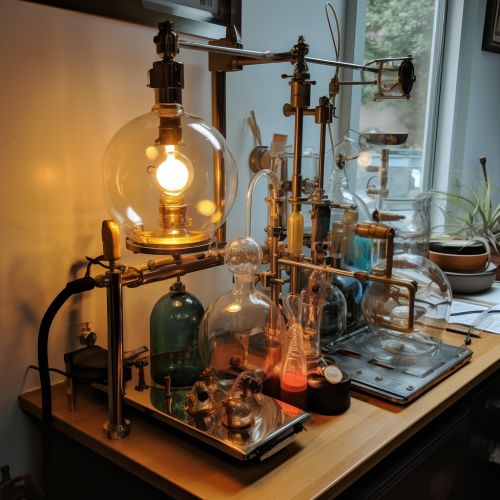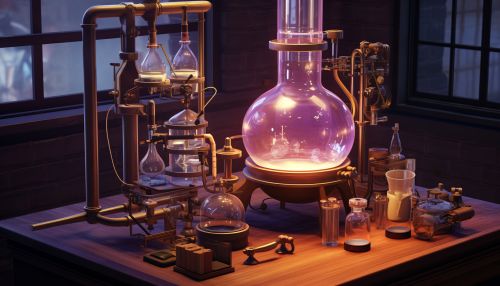Distillation
Introduction
Distillation is a process used in chemistry and industry that separates mixtures based on differences in the conditions required to change the phase of components of the mixture. The process involves heating a liquid to create vapor which is then condensed into a liquid. The action of boiling a liquid and condensing the vapor is the simplest example of distillation and is referred to as simple distillation. More complex forms of distillation exploit differences in the volatility of mixture's components or their ability to form azeotropes.
History
The concept of distillation has been applied since ancient times. Archaeological evidence from the Indus Valley Civilization of Pakistan suggests the use of distillation in the production of perfume. Distillation was known in the ancient Indian subcontinent, evident from baked clay retorts and receivers found at Taxila and Harappa, dated 3000–2800 BCE. Distillation was used in China, as early as the Han Dynasty (206 BC – 220 AD). Clear evidence of the distillation of alcohol comes from the Arab chemist Al-Kindi in 9th century Iraq.
Principles of Distillation
Distillation is based on the fact that the vapor of a boiling mixture will be richer in the components that have lower boiling points. Therefore, when this vapor is cooled and condensed, the condensate will contain more volatile components. At the same time, the original mixture will contain more of the less volatile material. Distillation columns are designed to achieve this separation efficiently.
Several factors affect the efficiency of distillation such as the difference in relative volatility of the components to be separated, the pressure and temperature at which distillation is carried out, the number of theoretical plates in the distillation column, and the amount of reflux used.
Types of Distillation
There are several types of distillation processes, including simple distillation, fractional distillation, and steam distillation. Each type has its own specific uses and advantages, depending on the nature of the mixture and the desired products.
Simple Distillation
Simple distillation is a procedure where two liquids with different boiling points can be separated. Simple distillation (the procedure outlined below) can be used effectively to separate liquids that have at least fifty degrees difference in their boiling points.
Fractional Distillation
Fractional distillation is used when the boiling points of the components of a mixture are close to each other. It involves the use of a fractionating column or distillation column, which has a series of trays or plates that the vapor contacts on its way up the column. Each contact is like a mini-distillation, and the net effect is as if many simple distillations were carried out.
Steam Distillation
Steam distillation is used for substances that have high boiling points or decompose at temperatures near their boiling points. It is a special type of distillation. In steam distillation, steam is bubbled through a mixture of substances. The hot steam helps to vaporize the other substance at a lower temperature than would be required on its own.
Applications of Distillation
Distillation has many applications. For example, in the petroleum industry, crude oil is distilled to separate it into its various components for use as fuels, lubricants, and chemical feedstocks. Distilled water is used in chemistry laboratories and in industry. In the food and beverage industry, alcoholic beverages are produced by distillation of fermented mixtures, and certain soft drinks contain distilled water. In the field of industrial chemistry, large quantities of hydrogen are distilled for use in the Haber process, and oxygen is distilled from liquefied air for use in steel-making.
Environmental Impact
Like any industrial process, distillation has an environmental impact. The energy required for distillation is substantial and is usually derived from the burning of fossil fuels, which contributes to global warming. There are also potential issues with the disposal of waste products from distillation processes. However, modern distillation plants are designed to minimize these impacts and are often coupled with cogeneration plants that produce electricity.
See Also
Categories


